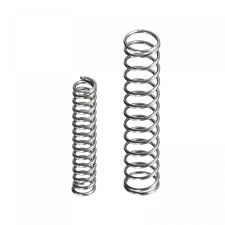
- Mobile Phone
- +8613931874955
- sales@cntcmetal.com
Durable Welded Steel Mesh for Construction and Industrial Applications
Understanding Welded Steel Mesh Applications, Benefits, and Types
Welded steel mesh, commonly referred to as welded wire mesh, is a versatile and durable construction material widely used in various applications across the construction and engineering sectors. Composed of intersecting steel wires that are welded at their junctions to form a grid-like pattern, this material has garnered recognition for its strength, stability, and ease of use. Let's explore the significance of welded steel mesh, the different types available, and its applications in modern construction.
Composition and Manufacturing Process
Welded steel mesh is typically produced using high-quality steel wire, which is either galvanized or coated to enhance its resistance to corrosion. The manufacturing process involves feeding wires through a machine that arranges them into a grid, followed by welding at the intersections. This creates a uniform and robust mesh that can bear significant loads, making it ideal for various structural applications.
Benefits of Welded Steel Mesh
1. High Strength and Load Distribution One of the primary advantages of welded steel mesh is its ability to distribute loads evenly across its surface. This property allows it to support heavy weights, making it suitable for reinforced concrete applications.
2. Versatility Welded mesh can be manufactured in various sizes, shapes, and wire gauges, which allows for flexibility in design and use. Whether for flooring, walls, or roofing, welded mesh can be customized to meet project specifications.
3. Enhanced Durability The imposing structural integrity of welded steel mesh combined with coatings against corrosion ensures longevity. It can withstand harsh environmental conditions, which is essential for outdoor applications.
4. Cost-Effectiveness By replacing traditional reinforcement methods, such as rebar, welded steel mesh can reduce labor costs and installation time. Its prefabricated nature allows for quicker setup on-site, cutting down on construction expenses.
5. Ease of Installation Welded mesh is lighter than solid steel, making it easier and safer to handle during the installation process. Its grid structure also allows for quick alignment and support during the pouring of concrete.
welded steel mesh

Applications of Welded Steel Mesh
Welded steel mesh finds extensive applications in many areas of construction and engineering
- Concrete Reinforcement It is primarily used as a reinforcement material in concrete slabs and beams. By providing additional strength, it helps prevent cracking and enhances the longevity of concrete structures.
- Fencing and Screening Welded wire mesh is also popular in fencing applications, creating durable barriers for properties, construction sites, and industrial facilities. Its robust design ensures security while maintaining visibility.
- Flooring Systems In industrial settings, welded steel mesh is employed to construct heavy-duty flooring systems capable of withstanding immense traffic and wear.
- Paving Welded mesh panels are often integrated into paving systems for roads and pavements, increasing their lifespan and resilience against environmental elements.
- Animal Enclosures The material is a preferred choice for creating animal enclosures in farms and zoos due to its strength and longevity.
Conclusion
In summary, welded steel mesh is an integral component of modern construction practices, revered for its strength, durability, and versatility. From reinforcing concrete to providing efficient fencing solutions, its applications are vast and diverse. As construction methods evolve and sustainability becomes a growing concern, the use of durable materials like welded steel mesh will continue to play a crucial role in ensuring the integrity and longevity of our built environment. Professionals in the construction industry should consider the benefits and applications of welded steel mesh to enhance their projects, ensuring they meet the demands of safety, efficiency, and cost-effectiveness. With its myriad advantages, welded steel mesh stands as a testament to the innovative materials that drive modern engineering forward.
share:
-
Your Source for Concrete Wall Ties and Masonry AccessoriesNewsJul.10,2025
-
Unlocking the Power of Iron Wire for Every ProjectNewsJul.10,2025
-
Explore Advanced Chain Wire and Stainless Steel Mesh FencingNewsJul.10,2025
-
Discover the Benefits of Annealed Wire ProductsNewsJul.10,2025
-
Discover China Stainless Steel Wire Mesh SolutionsNewsJul.10,2025
-
Build with Confidence Using High-Performance Masonry AccessoriesNewsJul.10,2025
-
Why Sacrificial Formwork Is Redefining Underground ConstructionNewsJun.06,2025



















